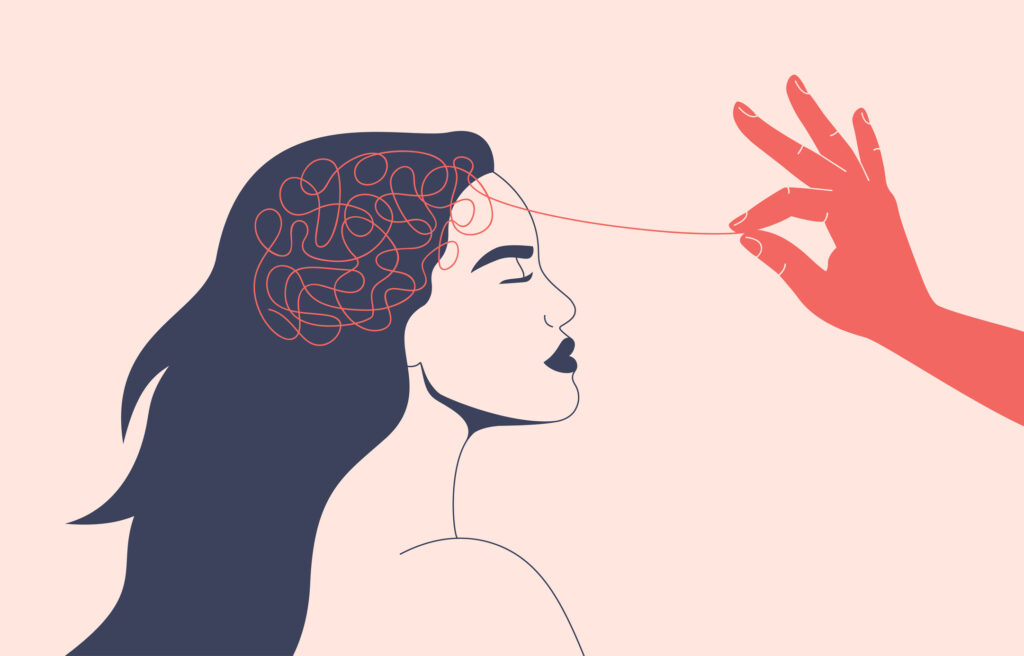Earlier in 2023 I was fortunate to be named ‘UK Mental Health Campaigner of the Year’.
I accepted this award not on behalf of those that are living with a mental health condition, but the forgotten majority who don’t have a diagnosis and don’t need clinical intervention, but frequently struggle with the burden and hurdles life throws at them.
This pressure is now so strong that 74% of us have said we have felt so stressed at some point over the last year, we have felt overwhelmed or unable to cope.
More than half (60%) of UK employees say they have experienced anxiety that interfered with their daily lives in the past weeks.
Workers in the UK are more stressed with work than any other country, with some research suggesting younger and those working remotely or in a hybrid way are struggling more than others.
More than half (60%) of UK employees say they have experienced anxiety that interfered with their daily lives in the past weeks
Micro-stress is exacerbating workplace mental health
But behind these near-record figures lies something called micro-stress; the small, daily stressors and frustrations that are compounding employees’ lives – with the potential to further exacerbate the problem of workplace mental health.
Throughout their lives, every single employee will struggle with their wellbeing, and for many of us, this will be temporary and manageable.
But the complexities of modern life mean many of us don’t have the skills and support to effectively manage our mental health in a way that helps us to deal better with micro-stressors.
The impact of micro-stresses
Unlike other stress, which tends to be big and very visible, micro-stressors tend to be far less obvious.
These small, seemingly insignificant disruptions to our day often go unnoticed by the conscious mind, but they accrue ripple effects and consequences that can trigger other stress and mental health.
Ubiquitous connectivity and instant messaging can amplify the micro-stressors we feel at work, as we’re often dealing with multiple projects, conversations and last-minute requests at once.
Micro-stress is now such a big problem that Brits spend a total of 27 days a year (or the equivalent of two hours a day) experiencing it. Employers have to better help their people to adapt and cope with life’s challenges.
Back in the 1980s, one study found that micro stresses were having more of an impact on psychological symptoms than major life events.
Even the World Economic Forum warns of the “mental health time bomb” behind micro-stresses. Increased stress is linked with inflammation, which can lead to a number of chronic health conditions.
The complexities of modern life mean many of us don’t have the skills and support to effectively manage our mental health in a way that helps us to deal better with micro-stressors
Enabling flow states
There are two main categories of micro-stressors: those which drain your personal capacity and those that deplete your emotional reserves.
With the right tools and policies, I believe employers can have a positive, direct and immediate impact on both of these categories.
One of the best ways for employers to help their people deal with these micro-stressors is to consent to giving them the time to pause and choose how to respond to the stressor.
At Benefex, we collectively refer to this as “taking time for quiet contemplation” or enabling flow states. Flow states help employees to still the mind and relieve it of distractions, aiding performance and wellbeing.
Reducing micro-stress and its impact on performance
Wellbeing aside, finding ways to help employees deal with micro-stressors is also a performance issue.
High performers tend to have more micro stressors in their lives than other employees. In fact, many high performers have been described in the research as “powder kegs of stress” who would really struggle to deal with any additional micro-stressors, and many aren’t even aware of their high-stress levels.
Studies show that in many organisations, high performers tend to be 400% more productive than the rest of your employees and the top 5% of them will account for 25% of your entire organisational output. Ensuring these ‘kegs’ don’t explode is principal.
One of the best ways for employers to help their people to deal with these micro-stressors is to consent to giving them the time to pause and choose how to respond to the stressor
The right support
The evidence from multiple studies is quite clear; productivity and performance aren’t about getting our people to do more, it’s about supporting them to be smarter in the ways they work.
This is how we start to see workplace wellbeing support that buffers against micro-stressors as a way to support performance and productivity.
According to one major study of one million employees, better wellbeing at work predicts outstanding job performance, so this is a major driver to get the right support in place.
But while micro-stresses are pervasive and dangerous, the authors of a new book The Microstress Effect have found that common stress relieving techniques are very good at helping employees to build resilience and better deal with the effects of micro-stress.
The business case for reducing micro-stress
Work-related stress now costs the UK economy £28 billion a year so there is a clear economic value to providing better support for micro-stress in the workplace.
While many other workplace wellbeing initiatives focus on those in crisis or with a diagnosed condition, I think we should be focussing on those whose mental health has the potential to get much worse if they don’t start focusing on their wellbeing.
Giving employees the tools, resources, and time to decompress means that we can reduce the impact of micro-stressors on employee wellbeing and performance.
Just allowing employees to take 10 minutes a day to decompress can give them better control over micros-stressors and set them up to not only better manage their day, but perform better too – and we’ve been able to show this.
Recently, we have been able to prove the impact of relieving employees of these micro-stresses in a new study published in the International Journal of Applied Positive Psychology.
We found that people who used Benefex’s OneHub Wellbeing product showed significantly greater changes in subjective wellbeing scores than those who didn’t.
Productivity and performance isn’t about getting our people to do more, it’s about supporting them to be smarter in the ways they work
The role of wellbeing interventions
While I believe there is a role for employers to play in reducing the impact of stress, it’s not always possible to remove the stressor. So we have to find better ways to support people to deal with stress.
Micro-stress is pernicious and now not only part of our everyday working lives but here with a greater frequency and volume than ever before.
However, employers have the ability to make a significant difference by investing in low-intensity wellbeing interventions in the workplace.
If you enjoyed this, read: Mental health myths: What you know about anxiety is wrong
[cm_form form_id=’cm_65a14c3f5da64′]









